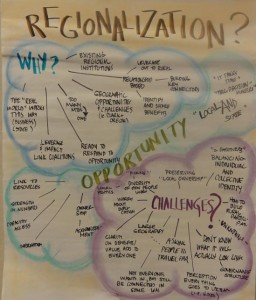 Back in 2008 I posted about a cake I made that richocheted around Twitter, much to my amusement. With St. Patrick’s day coming around, I thought I would repost it, but with a twist. Just a small echo to the culture of love as people respond to the earthquake in Japan.
Back in 2008 I posted about a cake I made that richocheted around Twitter, much to my amusement. With St. Patrick’s day coming around, I thought I would repost it, but with a twist. Just a small echo to the culture of love as people respond to the earthquake in Japan.
If you like the cake, the idea, the beer – whatever – donate to help the good folks of Japan who are suffering so much from the earthquake, Tsunami and nuclear challenges. I’ve copied in a list of donation options for you. Thanks in advance. Below the donations information is a snipped of the original post and a link to the recipe.
Bake. Do good.
Aid and Charitable Organizations From the NY Times
Each of the following groups have set up fundraising sites specifically for the victims of Friday’s earthquake and tsunami.
AMERICAN RED CROSS
Red Cross officials say donors can text REDCROSS to 90999 and a $10 donation will automatically be charged to donor’s phone bill, or donations can be made directly on its Web site.AMERICARES
Information is available on the organization’s Web site.CARE
CARE is one of the world’s largest private international humanitarian organizations. Their offices in Asia are on high alert and have ensured that staff are informed of the tsunami warnings and other related developments.DOCTORS WITHOUT BORDERS
Information is available on the organization’s Web site.GLOBALGIVING.ORG
GlobalGiving is working with International Medical Corps, Save the Children, and other organizations on the ground to disburse funds to organizations providing relief and emergency services to victims of the earthquake and tsunami. Donors can text JAPAN to 50555 to give $10, and larger increments can be submitted on GlobalGiving’s Web site.INTERNATIONAL MEDICAL CORPS
Information is available on the organization’s Web site.LIONS CLUBS INTERNATIONAL
Information is available on the organization’s Web site.THE SALVATION ARMY
The Salvation Army has been providing food and shelter to Tokyo commuters who were stranded when public transportation was interrupted by the earthquake. They are to send a team to Sendai, a city about 250 miles Tokyo, to assess the situation there. Text JAPAN or QUAKE to 80888 to make a $10 donation. (Make sure to respond “YES” to the Thank You message you receive.) Donations can also be made on the organization’s Web site or by calling 1-800-SAL-ARMY.SAVE THE CHILDREN
To make a donation, visit Save the Children’s Web site, call 1-800-728-3843, or text JAPAN to 20222 to donate $10.SHELTERBOX.ORG
Shelterbox.org is a disaster-relief organization that focuses on providing survival materials such as tents and cooking equipment to families displaced by disasters.UJA-FEDERATION OF NEW YORK
Information is available on the organization’s Web site or by calling (212) 836-1486.
Repeat. Bake. Do good.
I was making a chocolate Guinness cake last night, and I was trying to figure out how to weave it in with the rambly theme of my blog. After all, this isn’t a food blog, as much as I love food.
I had tweeted that I was going to make this cake in celebration of our finally naming “the book,” and I was amazed how many people wanted the recipe. I kept sending the recipe url to people who tweeted in reply.
It is interesting what captures our attention, what stimulates us to want to experiment.
Is it the chocolate? The Guinness? The cake? Cooking? Food? In any case, the interest prompted me to blog about the cake. Oh, and the cake is really good – though I’d suggest using a little less butter. I added some grated unsweetened coconut and I’d suggest adding some chopped, roasted pecans as well. I substituted mascarpone for the cream cheese in the icing (because that’s what I had on hand) which makes a subtler icing. I think I’d prefer the cream cheese!




